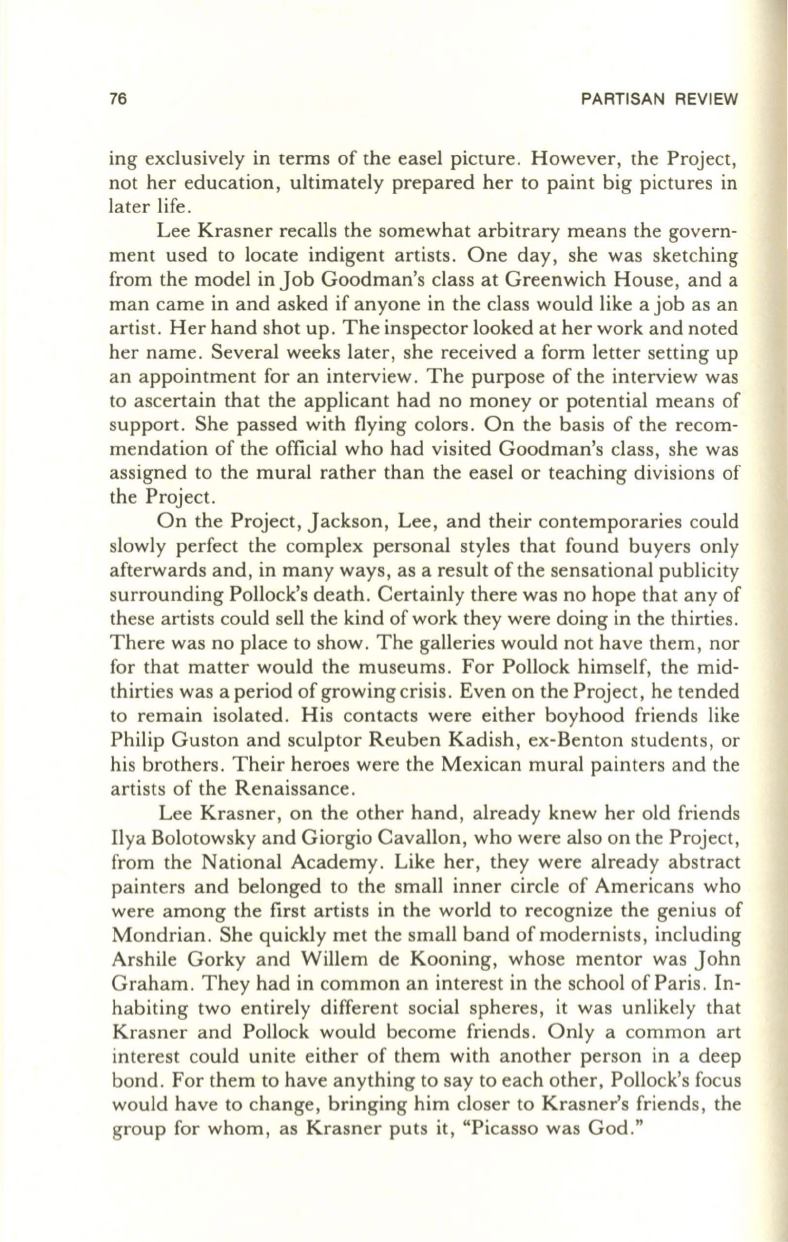
76
PARTISAN REVIEW
ing exclusively in terms of the easel picture. However, the Project,
not her education, ultimately prepared her to paint big pictures in
later life.
Lee Krasner recalls the somewhat arbitrary means the govern–
ment used to locate indigent artists. One day, she was sketching
from the model inJob Goodman's class at Greenwich House, and a
man came in and asked if anyone in the class would like a job as an
artist. Her hand shot up. The inspector looked at her work and noted
her name. Several weeks later, she received a form letter setting up
an appointment for an interview. The purpose of the interview was
to ascertain that the applicant had no money or potential means of
support. She passed with flying colors. On the basis of the recom–
mendation of the official who had visited Goodman's class, she was
assigned to the mural rather than the easel or teaching divisions of
the Project.
On the Project, Jackson, Lee, and their contemporaries could
slowly perfect the complex personal styles that found buyers only
afterwards and, in many ways, as a result of the sensational publicity
surrounding Pollock's death. Certainly there was no hope that any of
these artists could sell the kind of work they were doing in the thirties.
There was no place to show. The galleries would not have them, nor
for that matter would the museums. For Pollock himself, the mid–
thirties was a period of growing crisis. Even on the Project, he tended
to remain isolated. His contacts were either boyhood friends like
Philip Guston and sculptor Reuben Kadish, ex-Benton students, or
his brothers. Their heroes were the Mexican mural painters and the
artists of the Renaissance.
Lee Krasner, on the other hand, already knew her old friends
IIya Bolotowsky and Giorgio Cavallon, who were also on the Project,
from the National Academy. Like her, they were already abstract
painters and belonged to the small inner circle of Americans who
were among the first artists in the world to recognize the genius of
Mondrian. She quickly met the small band of modernists, including
Arshile Gorky and Willem de Kooning, whose mentor was John
Graham. They had in common an interest in the school of Paris. In–
habiting two entirely different social spheres, it was unlikely that
Krasner and Pollock would become friends. Only a common art
interest could unite either of them with another person in a deep
bond. For them to have anything to say to each other, Pollock's focus
would have to change, bringing him closer to Krasner's friends, the
group for whom, as Krasner puts it, "Picasso was God."


